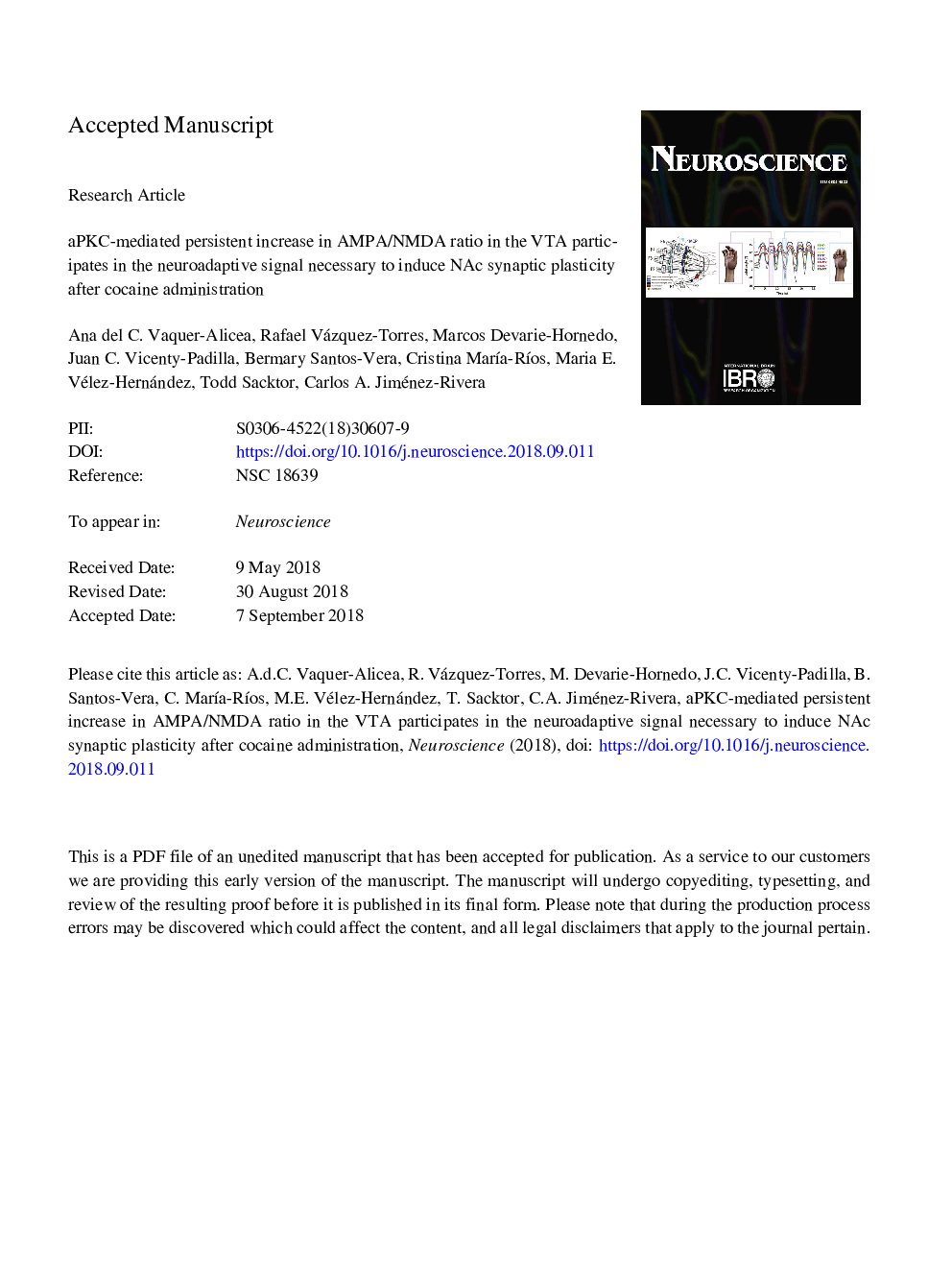| Article ID | Journal | Published Year | Pages | File Type |
|---|---|---|---|---|
| 11013191 | Neuroscience | 2018 | 33 Pages |
Abstract
Chronic cocaine exposure produces enduring neuroadaptations in the brain's reward system. Persistence of early cocaine-evoked neuroadaptations in the ventral tegmental area (VTA) is necessary for later synaptic alterations in the nucleus accumbens (NAc), suggesting a temporal sequence of neuroplastic changes between these two areas. However, the molecular nature of the signal that mediates this sequential event is unknown. Here we used the behavioral sensitization model and the aPKC inhibitor of late-phase LTP maintenance, ZIP, to investigate if a persistent increase in AMPA/NMDA ratio plays a role in the molecular mechanism that allows VTA neuroadaptations to induce changes in the NAc. Results showed that intra-VTA ZIP microinfusion successfully blocked cocaine-evoked synaptic enhancement in the VTA and the expected AMPA/NMDA ratio decrease in the NAc following cocaine sensitization. ZIP microinfusions also blocked the expected AMPA/NMDA ratio increase in the NAc following cocaine withdrawal. These results suggest that a persistent increase in AMPA/NMDA ratio, mediated by aPKCs, could be the molecular signal that enables the VTA to elicit synaptic alterations in the NAc following cocaine administration.
Keywords
Related Topics
Life Sciences
Neuroscience
Neuroscience (General)
Authors
Ana del C. Vaquer-Alicea, Rafael Vázquez-Torres, Marcos Devarie-Hornedo, Juan C. Vicenty-Padilla, Bermary Santos-Vera, Cristina MarÃa-RÃos, Maria E. Vélez-Hernández, Todd Sacktor, Carlos A. Jiménez-Rivera,
